
One-Piece vs Two Piece Toilet – Pros and Cons- 2025 Expert Guide
When upgrading your bathroom, one of the most important—and often overlooked—decisions is choosing between a one-piece or two-piece toilet. While
Acrylic and porcelain bathtubs make excellent additions to any bathroom, but it is important to understand their differences before you choose the right one for your home. Here are their primary advantages and disadvantages between both acrylic and porcelain:
Acrylic bathtubs are constructed by bonding an acrylic finish over a fiberglass tub and porcelain bathtubs are made by applying an enamel coating over a tub of iron. Through their construction, porcelain tubs are a great deal heavier than acrylic, making porcelain tubs harder to install.
Porcelain is also a harder material than acrylic, meaning their surfaces are more durable and more scratch resistant, although they are susceptible to heavy impacts.
Here are the main differences of porcelain and acrylics that should be considered before purchasing.
Of the two, Acrylic is much lighter than Porcelain. This means that acrylic has much more flexibility when it comes to installation and placement in the bathroom, making it much easier to install than a porcelain tub. It’s lighter weight also means that it is much easier to manipulate and use, thus, giving it a wide range of available shapes and sizes on the market. affects the number of sizes and shapes available.
In contrast, porcelain is much more limited in available shapes and sizes due to the additional weight of the material itself, making it much more difficult to install.
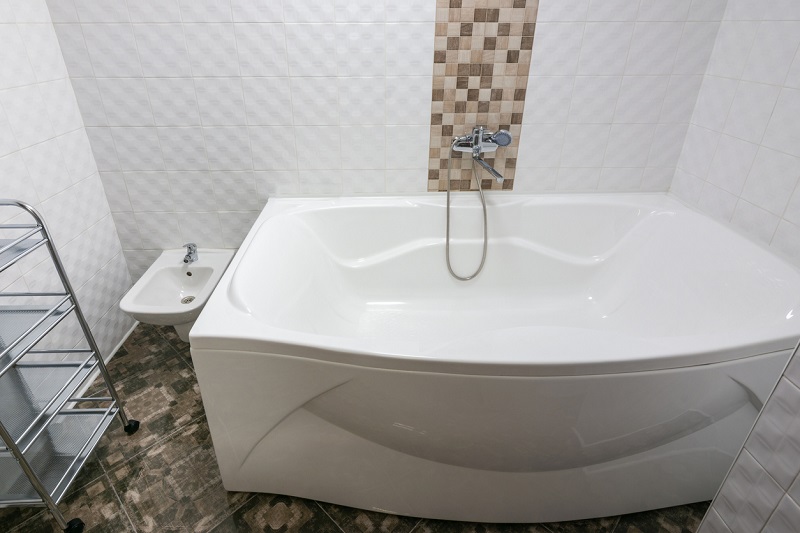
Acrylic tubs have better heat retention than porcelain tubs. Porcelain tubs are created by layering a porcelain coating over an iron or metal base. This creates a separating layer between the coating and the structural material of the tub itself, meaning the material will release heat much faster.
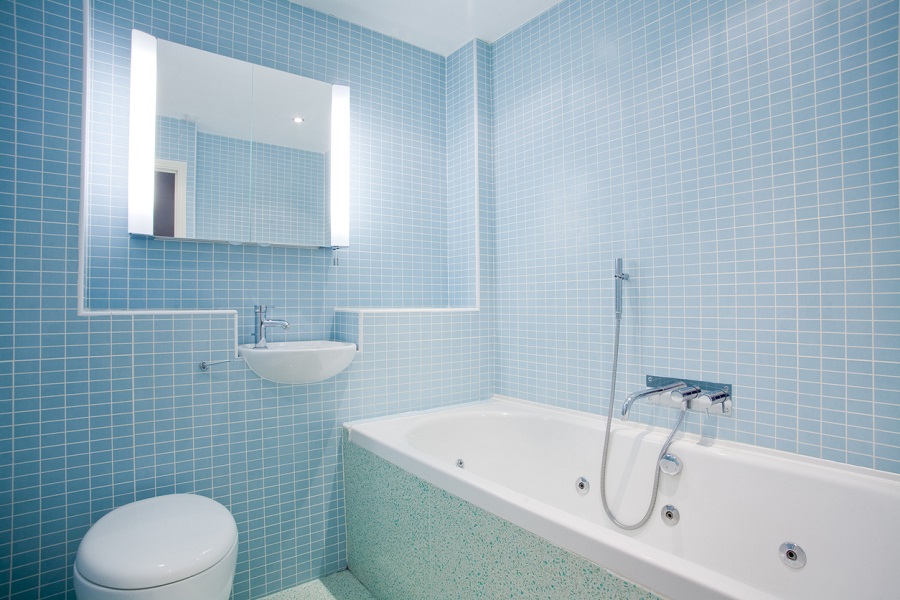
Acrylic, on the other hand, is constructed from reinforced fiberglass and it a contiguous material bonded together into the shape of a bathtub, meaning the material will retain heat for longer periods of time as there is no other material to get in the way. It is important to note that there are some models of porcelain tubs that are foam insulated to help retain heat for longer, and if done so, the tub’s heat retention is about equal to acrylic.
Due to the nature of how they are constructed, porcelain bathtubs are generally more expensive than acrylic. This cost also takes into consideration that porcelain tubs require more maintenance than acrylic and are generally more expensive to install as well. Bathtub costs between acrylic and porcelain will also depend on the size of the tub that the end user chooses.
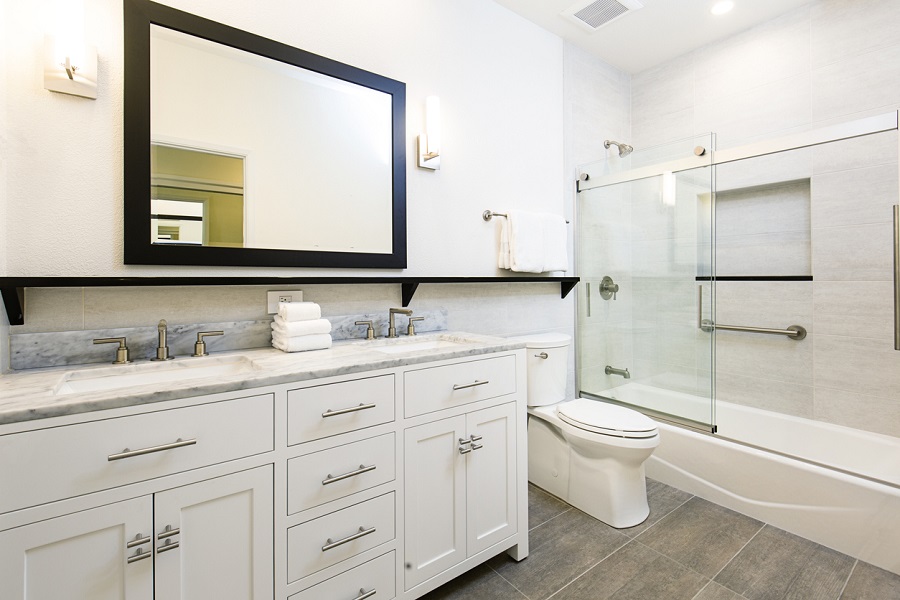
Acrylic is generally a much more durable material when compared to porcelain. Although porcelain tubs have a much harder surface and are more resistant to scratches when compared to acrylic, the harder surface is much more susceptible to cracks and chipping from heavy impacts. Fixing bathtub cracks in porcelain tubs can be more challenging and may require specialized repair techniques to restore the tub’s appearance and functionality.
Acrylic is a softer material and can, therefore, weather hard impacts much easier. whether hard impacts much easier.
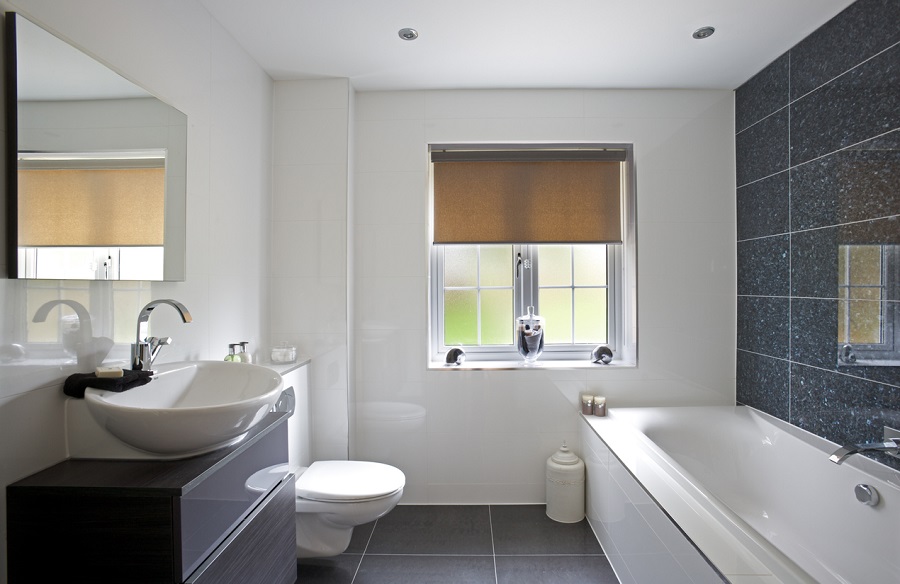
Maintaining either porcelain or acrylic is actually very similar. They both require a great deal of care to clean properly without damaging the material itself. The big difference is that acrylic can be cleaned with a commercial based cleaner or detergent where porcelain cannot.
Porcelain requires a hand wash with either a vinegar solution, lemon water, or soap. Avoid using steel wool or any abrasive brushes as well when cleaning your porcelain tub. Either material will discolor over time if proper care is not applied. For detailed instructions, refer to a bathtub cleaning guide to ensure you are using the correct methods and products to maintain your tub’s appearance and longevity.
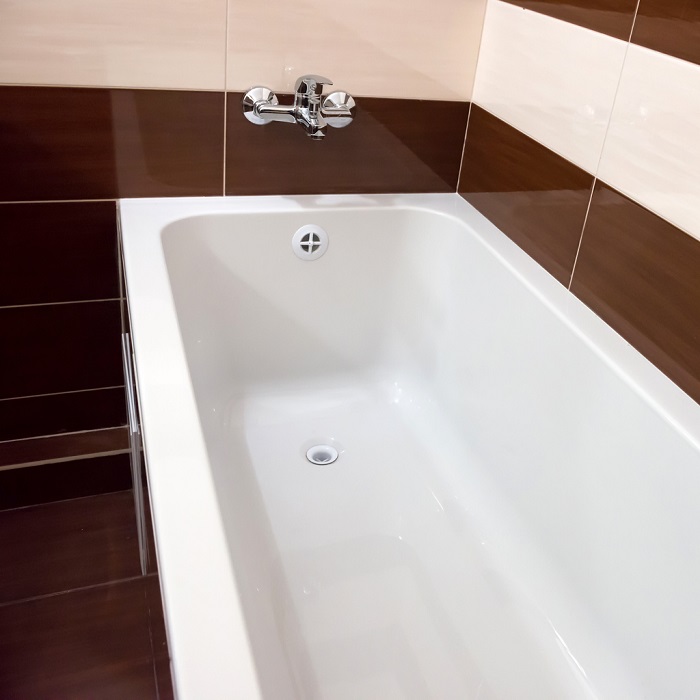
Restoration is the same for both materials, although in the case of acrylic, it is slightly easier to repair/restore an acrylic tub than a porcelain tub. If an acrylic tub is damaged, it can be repaired with a refinishing kit, which will reapply a coating over the surface, removing many of the initial blemishes.
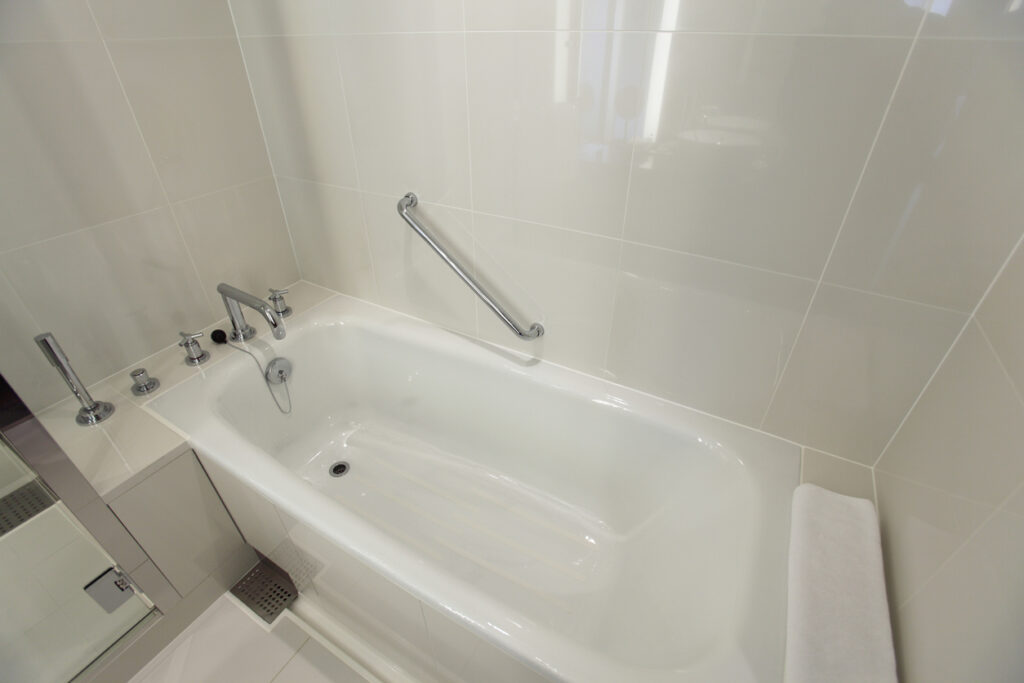
Repairing a porcelain tub is accomplished in a similar method, using a store bought refinishing kit, although in many cases, it is advisable to seek professional application.
In terms of popularity and resell value, both of these materials are fairly popular. Porcelain provides a more classic look and feel, where acrylic is more modern and easier to incorporate in any color scheme. Porcelain used to command more value on resale, but today, both of these are about equal as many homes contain both a modern and classic appeal.

When it comes to general maintenance and stain removal, acrylic is a much better material than porcelain. Porcelain tubs have a more rigid surface, making them more resistant to scratches and more susceptible to cracks and damage from heavy impacts. Because of the surface, you cannot clean porcelain tubs with abrasive cleaners or anything that might damage it, such as scouring powder, steel wool, or vinegar. To clean a porcelain tub, you will need to use a combination of ammonia, baking soda, and warm water to gently scrub the stained areas of the tub until they are gone. On the other hand, acrylic is much easier to clean, as a combination of hot water, baking soda, or a mild detergent is enough to remove most stains. Simply fill the tub with vinegar and hot water, leave for 15 minutes, then drain and scrub with baking soda.
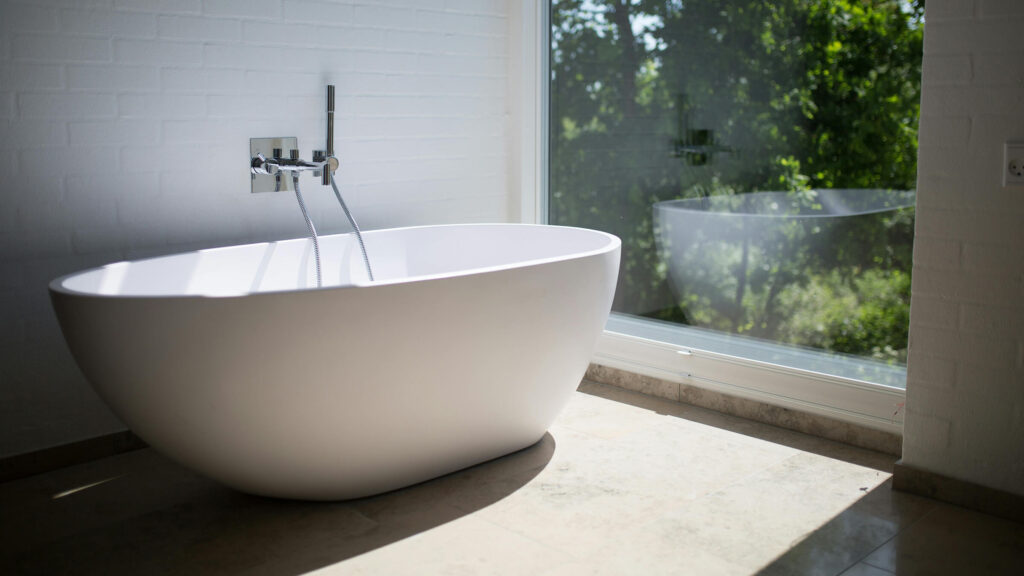
| Aspect | Acrylic Bathtub | Porcelain Bathtub |
|---|---|---|
| Weight | Pros: Lightweight, easy installation | Cons: Heavy, difficult installation |
| Heat Retention | Pros: Better heat retention | Cons: Heat dissipates faster |
| Cost | Pros: Generally cheaper | Cons: Generally more expensive |
| Durability | Pros: More resistant to impacts | Cons: Susceptible to cracks, chips |
| Maintenance | Pros: Can use commercial cleaners | Cons: Requires specific cleaning |
| Restoration | Pros: Easier to repair | Cons: May require professional help |
| Popularity and Resale | Pros: Modern, versatile design | Pros: Classic look, timeless appeal |
| Stain Removal | Pros: Easier to clean | Cons: Requires gentle cleaning methods |
Overall, acrylic is a much more versatile bathtub material than porcelain. It has arguably better durability, better heat retention, and it is much more flexible in terms of design and style. Maintenance and repair for both materials is about even, and generally acrylic is cheaper than porcelain, so unless you are married to the classic look, acrylic is the recommended choice for your bathroom.

Eric is the founder and president of Badeloft USA. He has been the president of Badeloft’s US division for over ten years and oversees all marketing and branding aspects of Badeloftusa.com.
His expertise lies in small business development, sales, and home and bathroom industry trends and information.
Contact us with any business related inquiries.
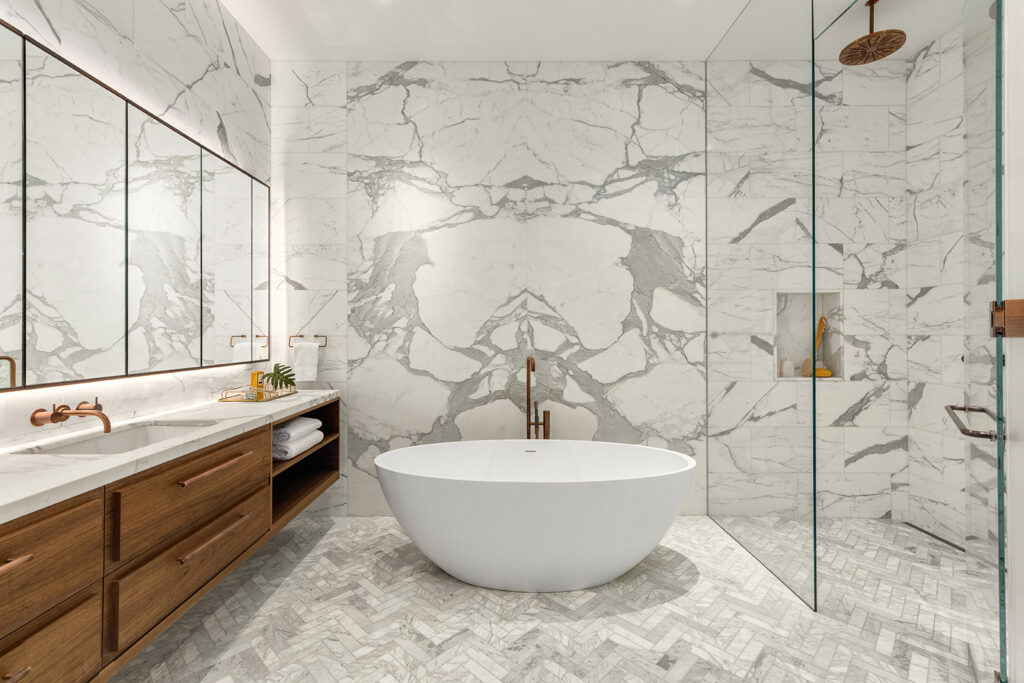
Free material samples and tub templates

When upgrading your bathroom, one of the most important—and often overlooked—decisions is choosing between a one-piece or two-piece toilet. While

Small details, including what you place on the floor, can make a big difference when setting up or upgrading your

Plumbing traps may seem like small components, but they are critical in keeping your home safe and odor-free. Two of
When shopping for new bath linens, the difference between a bath towel and a bath sheet can feel subtle, but
Request your free material sample below. By submitting, you agree to receive occasional product updates and offers from Badeloft. Unsubscribe anytime.
"*" indicates required fields
"*" indicates required fields
"*" indicates required fields
Acrylic is a softer material and can, therefore, weather hard impacts much easier. whether hard impacts much easier.
Costs between Acrylics and Porcelain will also depend on the size of the tub that the end user.
Acrylic yellows over time. Porcelain does not. Has this changed?
acrylic always looks like a cheap contractor add on, porcelin looks and feels better